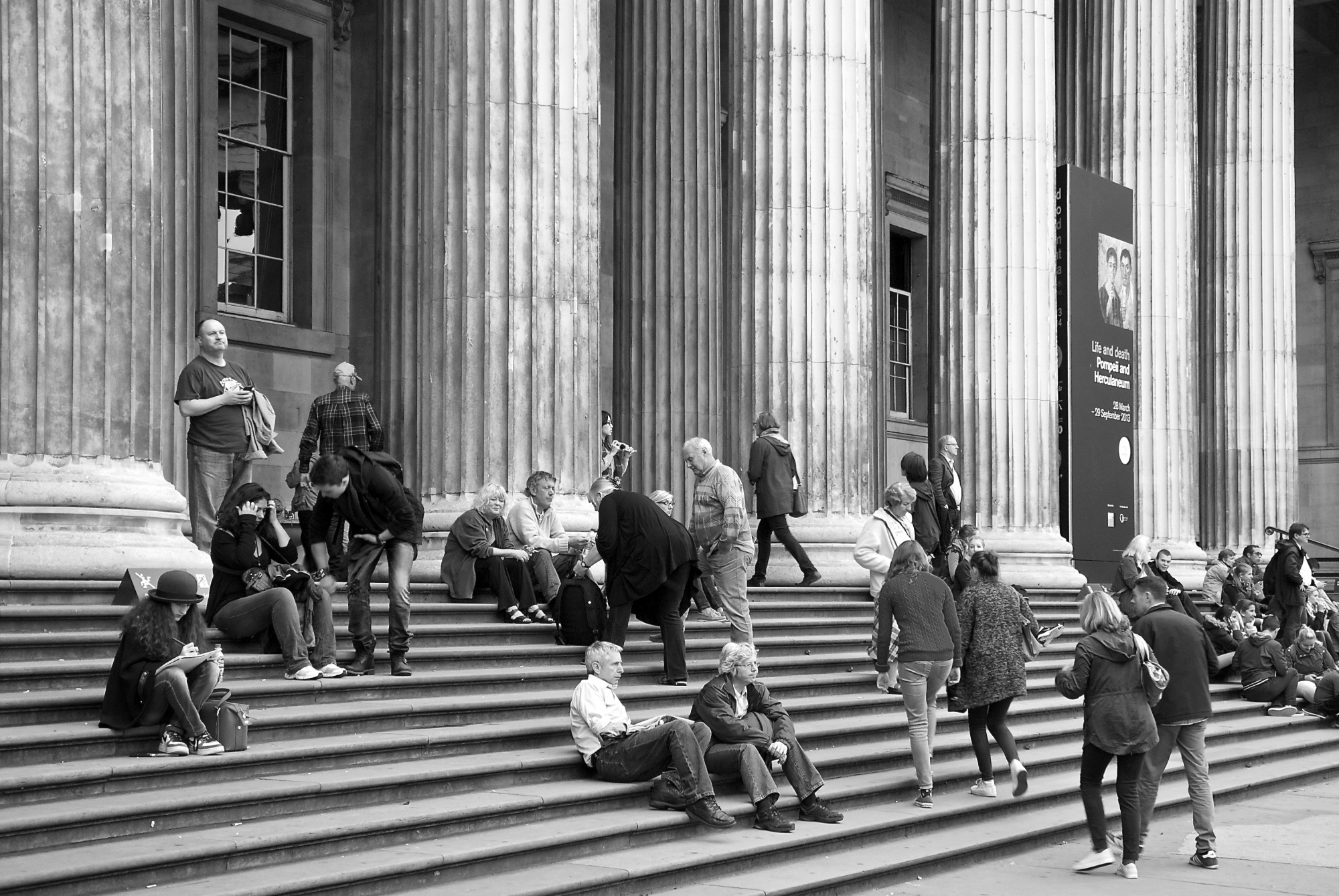Greek orators, current solution-based efforts, and 25 photographs remind us of the central role of human opportunity in the urban environment.

"These times seem so inevitably urban", writes Chuck Wolfe, referencing a Seattle development boom, contemporary efforts at scalable solutions (such as CityLab 2014, the Placemaking Leadership Council, and the Future of Places) and a continuing focus on human opportunities in the city.
But, he notes:
[I]t's worth remembering that inquiry about the how to fulfill human opportunities is longstanding. There is undeniable precedent in storied [Greek] oratory, arguably the internet of ancient times.
Not houses finely roofed or the stones of walls well builded, nay nor canals and dockyards make the city, but men [sic] able to use their opportunity [emphasis added].
Wolfe uses this citation and later literature, as well as observations of 20th century planners (including his father, a planning professor), as a reminder of the need to marshal interdisciplinary forces to make an accessible urban form through attention to long commutes and related life choices, issues of density v. intensity, as well as urban character across both urban and suburban patterns.
He intersperses 25 black and white photographs of the human opportunity noted above, to illustrate fundamental traits of city dwellers across cultures, distance and time, and to challenge the reader to think about how best to maximize the opportunities for those pictured and to realistically assess city life.
He concludes:
As explained here, this story of "urban inevitability" has traveled through sophism -- a once-revered (albeit privileged) form of teaching, across the ages. But the very point of such sophism -- defining the city on human terms -- should not morph to "sophistry", a more modern term reflective of deceit and specious debate.
...
I would venture that to be "able to use the opportunity" of the city is a perpetual challenge best observed in the conduct of the users themselves.
FULL STORY: The Look and Feel of 'Inevitably Urban'

Maui's Vacation Rental Debate Turns Ugly
Verbal attacks, misinformation campaigns and fistfights plague a high-stakes debate to convert thousands of vacation rentals into long-term housing.

Planetizen Federal Action Tracker
A weekly monitor of how Trump’s orders and actions are impacting planners and planning in America.

San Francisco Suspends Traffic Calming Amidst Record Deaths
Citing “a challenging fiscal landscape,” the city will cease the program on the heels of 42 traffic deaths, including 24 pedestrians.

Opinion: What San Francisco’s Proposed ‘Family Zoning’ Could Really Mean
Mayor Lurie is using ‘family zoning’ to encourage denser development and upzoning — but could the concept actually foster community and more human-scale public spaces?

Jacksonville Launches First Autonomous Transit Shuttle in US
A fleet of 14 fully autonomous vehicles will serve a 3.5-mile downtown Jacksonville route with 12 stops.

‘Big, Beautiful Bill’ Guts EV Tax Credits
The bill eliminates federal subsidies for electric vehicle buyers and charging stations.
Urban Design for Planners 1: Software Tools
This six-course series explores essential urban design concepts using open source software and equips planners with the tools they need to participate fully in the urban design process.
Planning for Universal Design
Learn the tools for implementing Universal Design in planning regulations.
Gallatin County Department of Planning & Community Development
Heyer Gruel & Associates PA
JM Goldson LLC
City of Camden Redevelopment Agency
City of Astoria
Transportation Research & Education Center (TREC) at Portland State University
Jefferson Parish Government
Camden Redevelopment Agency
City of Claremont


























